A Physical Therapist-Approved Upper Body Warm-Up
This post is in partnership with West Town Physical Therapy. As always, we only write about experiences and companies we love.
When time is of the essence (and it usually is, especially during the holiday season), it’s all too tempting to skip any kind of warm-up and go straight into the meat of your workout. After all, time is money — and in this case, why spend 10 minutes of upper body day warming up when you could get in three extra sets of shoulder presses or tricep extensions instead?
We’ll admit, we’re totally guilty of this too — but after talking to Erin Conroy, owner and physical therapist at West Town Physical Therapy, we’re convinced that devoting a little bit of our workout to a strategic warm-up is going to make it all that much easier to lift presents, trees, and trays of holiday cookies over the next month.
What should you include in an upper body warm-up?
“With the shoulders, it’s really important to focus on things beyond the shoulders,” explains Conroy. With all your shoulder movements, then, your thoracic spine, shoulder blades, neck, core (or, if you’re fancy, the scapulohumeral rhythm), it’s crucial to get that upper body working together nicely. That way, your shoulder blades are rotating together and your thoracic spine is going into extension safely — think of it as oiling the gears of your machine before you turn it on all the way.
Start with mobility
One of Conroy’s favorite things to do? Foam-rolling the thoracic spine, arching over the foam roller and facing up to get some extension (which is key for taking on overhead movements safely). Foam roll for just a minute or two before moving on.
Next, move into a side-lying thoracic rotation, which gives you a dynamic stretch for your pectoral muscles in addition to that thoracic rotation. Complete 20 reps on each side.

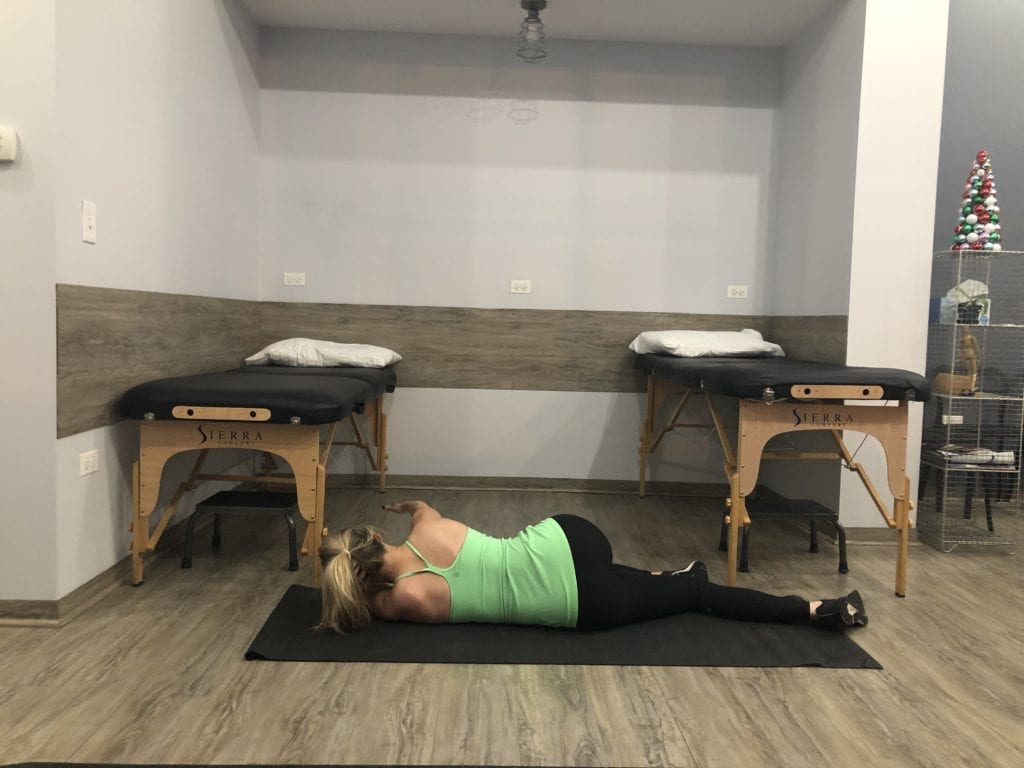
If you’re feeling especially tight, Conroy recommends starting with simple backwards shoulder rolls.
“A lot of times when we’re feeling tight in our shoulders, it’s because our upper traps are usually tight,” she explains. “Doing an upper trap stretch will help loosen those shoulders up as well, because your upper trap attaches to your shoulder blades.”

You can also give the levator scapulae a little extra stretch by guiding your chin down towards your armpit, using your hand again for a little extra pull for 10-30 seconds (this should be a gentle stretch. Feeling like you are going to rip your neck off doesn’t give any extra benefit!).
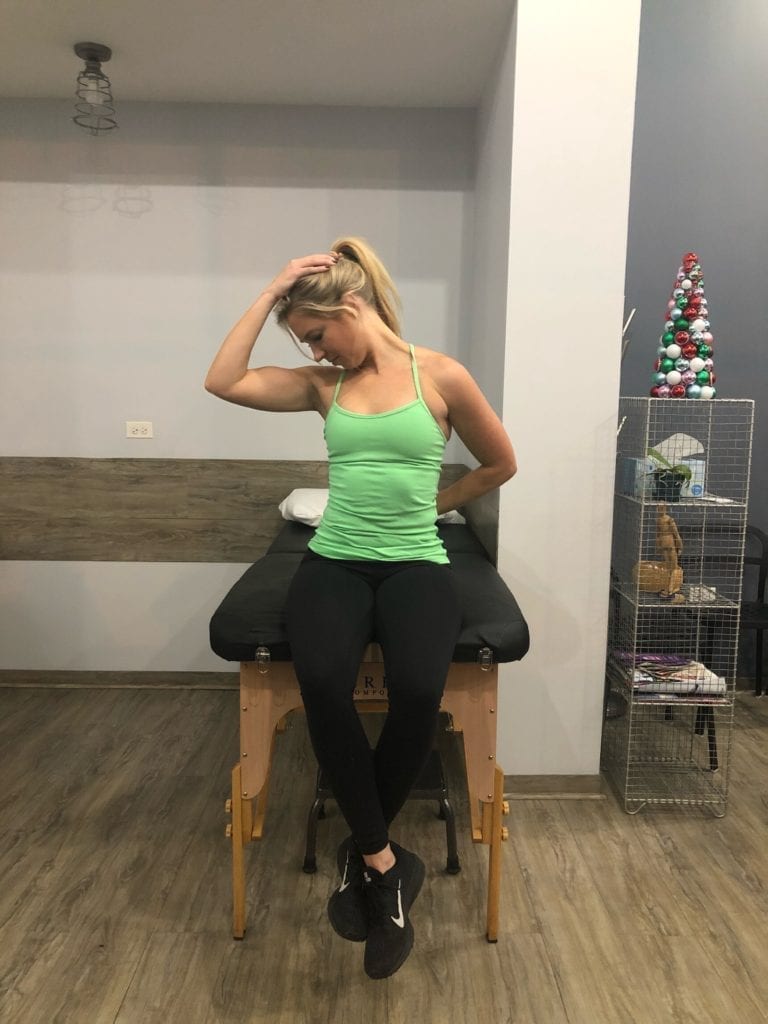
Next, move into more dynamic stretching and stabilization
After your mobility work, “it’s important that you control that motion that you have,” emphasizes Conroy. “If you don’t learn how to control that motion, you’re not going to keep that mobility and you’re also at risk to injure yourself in those ranges of motion.”
To that end, we want to start activating key stabilizers and warming up the whole body.
“And just because it’s an upper back and shoulder day doesn’t mean you can forget your core!” cautions Conroy, who recommends bird dog first for priming your core via a full-body movement.
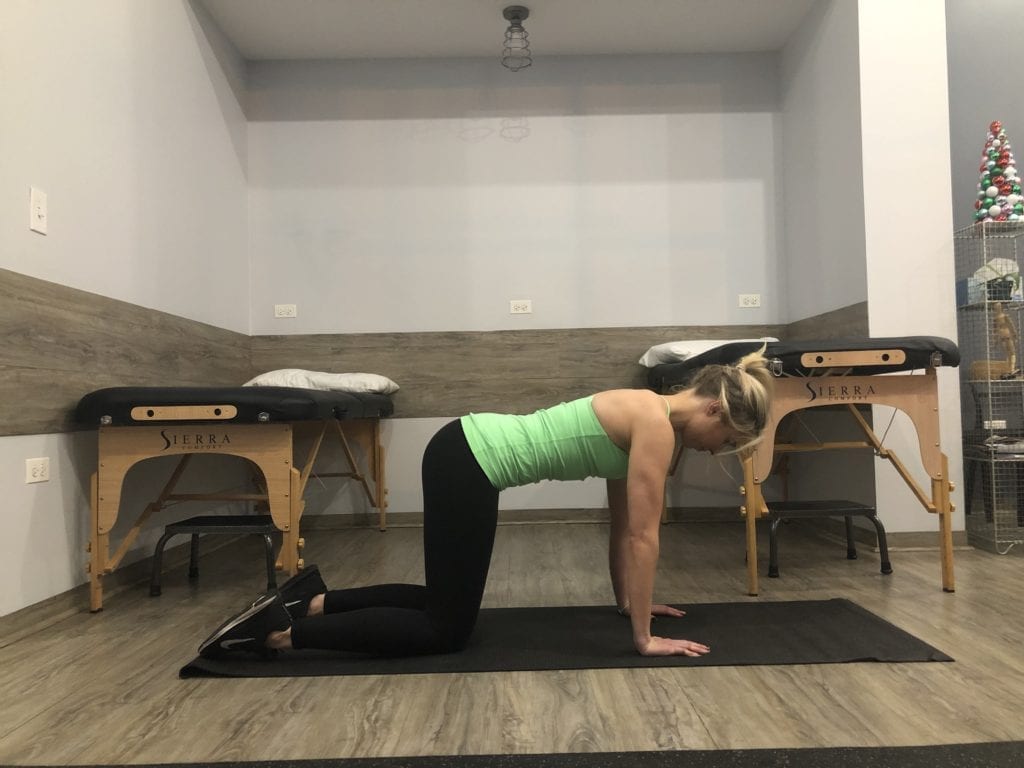
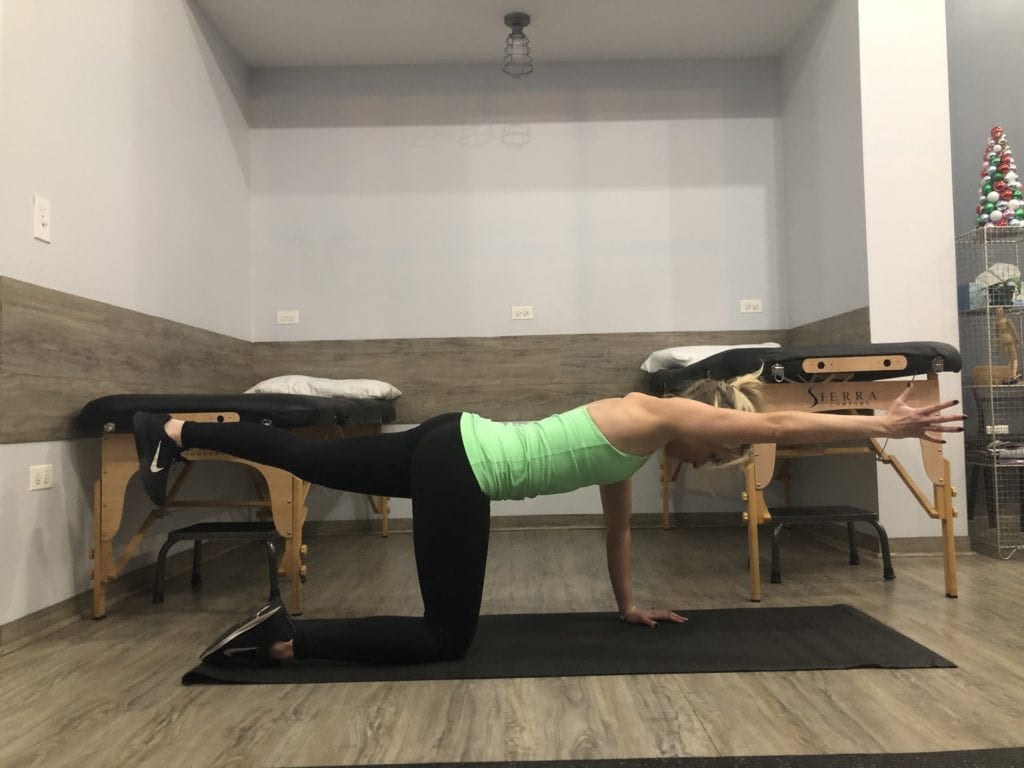
Try 10 reps on each side: extend your left arm forward and your right leg back, squeezing your leg and arm as if you’re trying to touch the wall behind you and the wall in front of you at the same time; then, bring arm and leg back to their starting points with control and repeat on the other side. Pretend like you are balancing a glass of water on your back to really focus on that control. These should be slow and controlled.
In that same tabletop position, work through the serratus press.

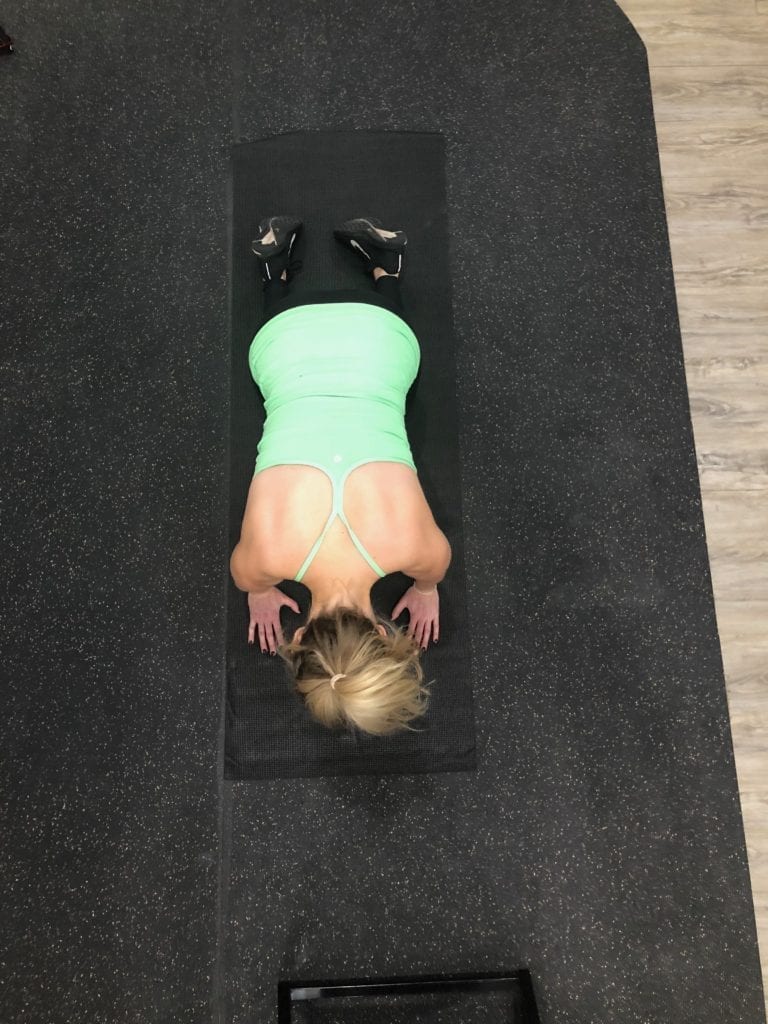
In this movement, you’re pushing your shoulderblades away and letting them come back together. On the surface, it’s similar to a cat-cow movement, but don’t be fooled — the serratus press focuses just on your shoulderblades moving horizontally and coming together, and it works the muscle that keeps your shoulder flat on the rib cage while priming the shoulder muscles (including the rotator cuff) to stabilize that position. Aim for 10 reps total.
Next, Conroy recommends this combo movement: holding a high plank and shifting into a down-dog, flowing between the two for about 10 reps.

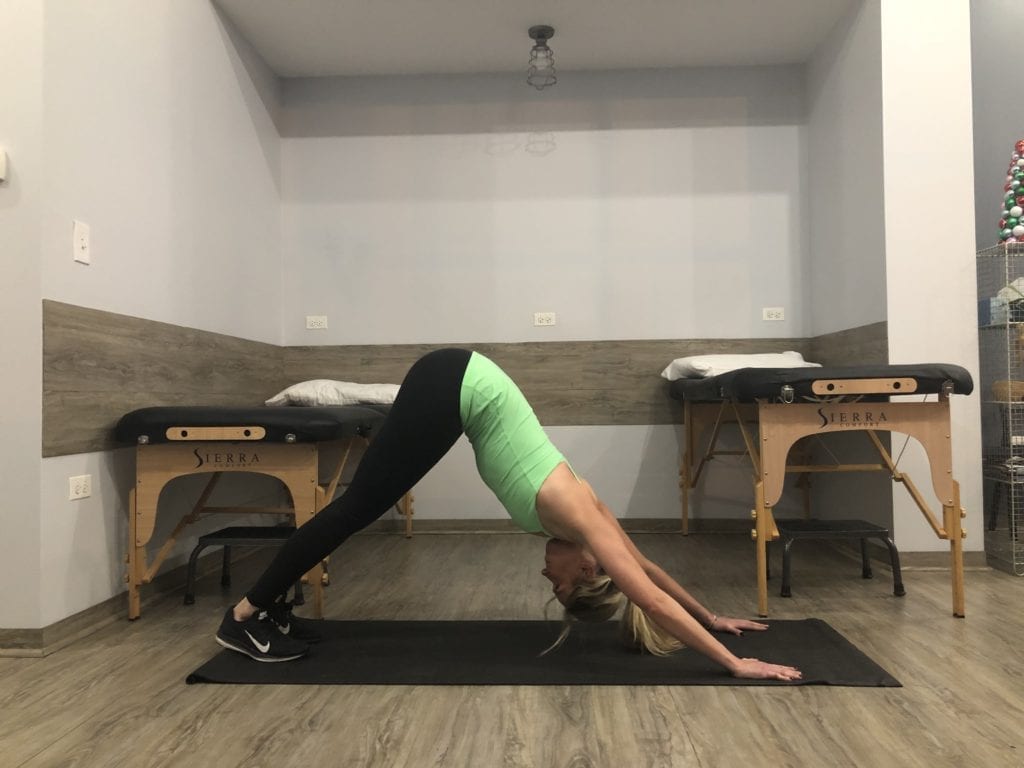
This movement series turns on the upper back and shoulder movements; as you push back into down dog, you’re using those muscles to stabilize, while also getting a dynamic stretch to your lats.
“Think about always pushing the floor away while you’re in that plank position,” advises Conroy, “so not letting those shoulder blades sink in.”
Finish with open chain activities
Here’s where we’re going to start priming the stabilizer muscles of your shoulder blades. Conroy points out that muscles such as the middle and low traps and rhomboids are very important for stabilizing everything in back and letting it move smoothly.
“A lot of times, we overtrain our upper traps and forget about these other smaller muscles that control the shoulder blade position,” she shares. “But if that shoulder blade isn’t moving and rotating as it should, the shoulder joint is going to find a way to get that motion somehow. This is when we end up with things like extra shoulder mobility or incorrect joint positioning, which puts you at risk for injury.”
Conroy recommends a banded pull-apart at the bottom, with arms fully extended down.

“Think about pulling and squeezing your shoulder blades together, as if you’re pinching a pencil between your shoulder blades,” cues Conroy. “It also helps do open up your chest a bit.” Complete 10 reps.
After those reps, move your band and arms up to about shoulder height for more horizontal abduction, using that same pull-apart motion to pull your shoulders together without letting them creep up towards your ears.


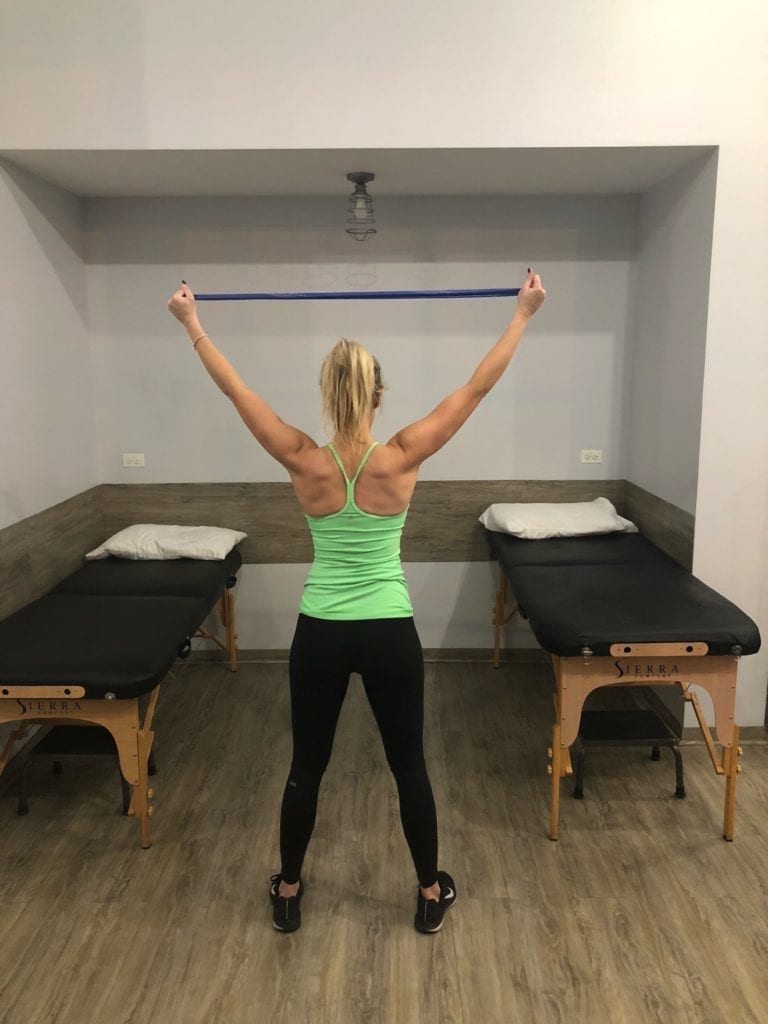
At shoulder-height, pull your band apart; while keeping that “pull” engaged, raised your arms up over your head and slowly bring them back down to shoulder height, aiming for 10 reps and a controlled range of motion.
During this motion, “keep your chest proud,” advises Conroy — puffing your chest help will help engage those muscles.
Once you finish each banded pull-apart move separately, it’s time to put them together into one combination move to train those muscles through the full movement.
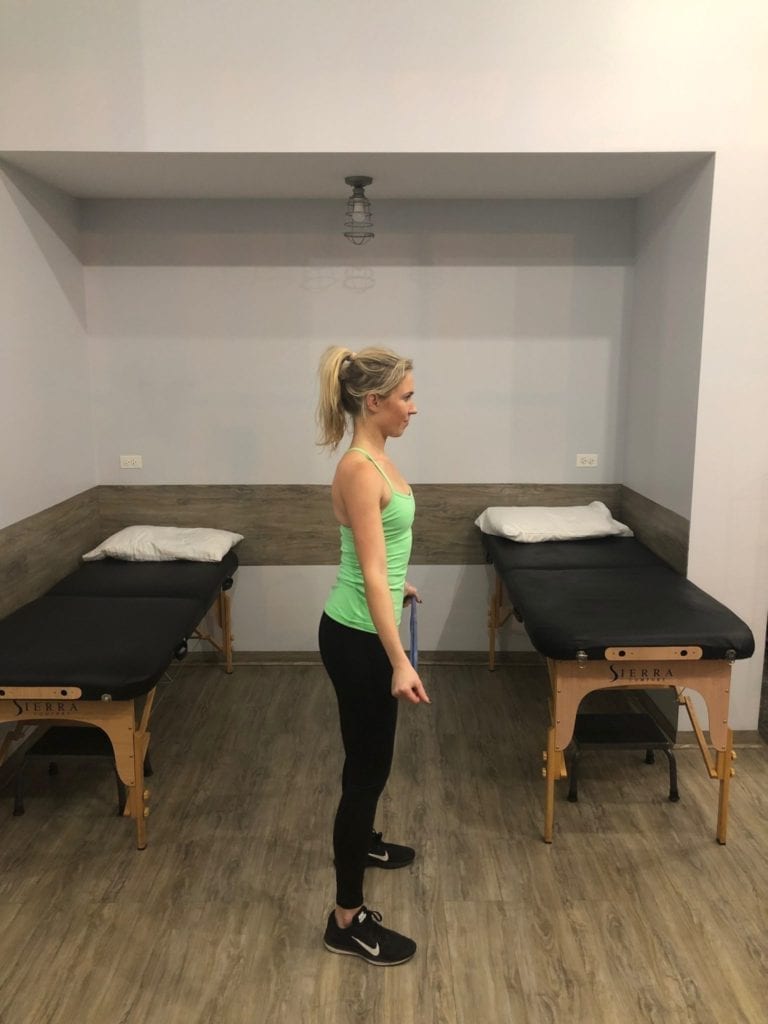

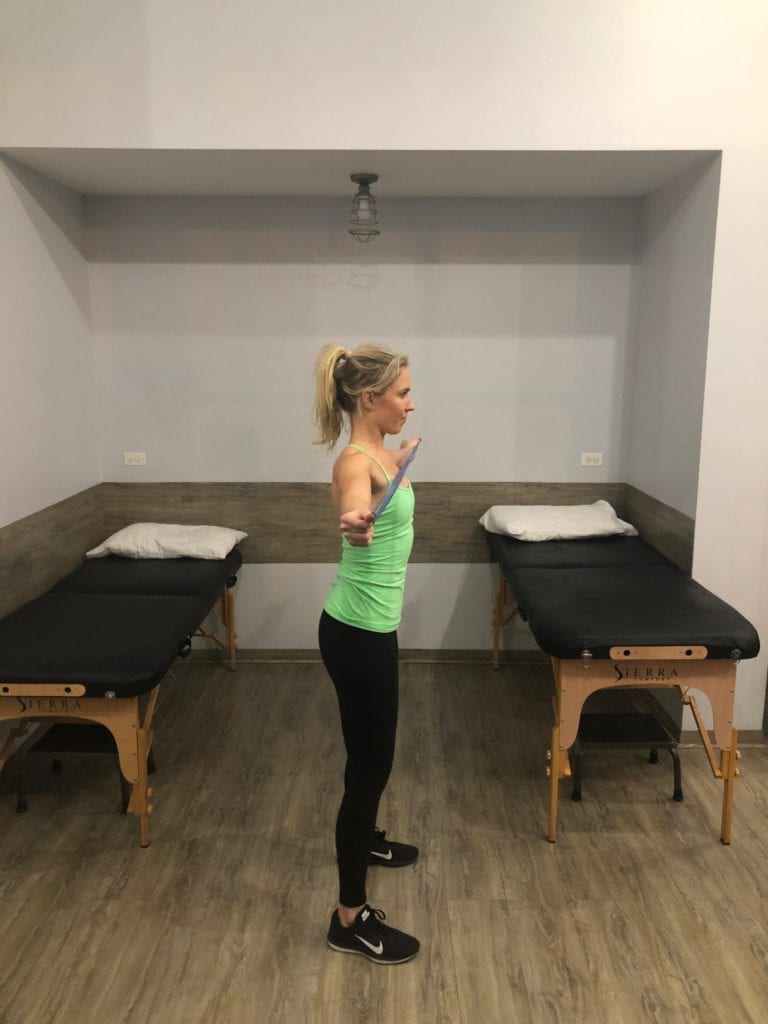
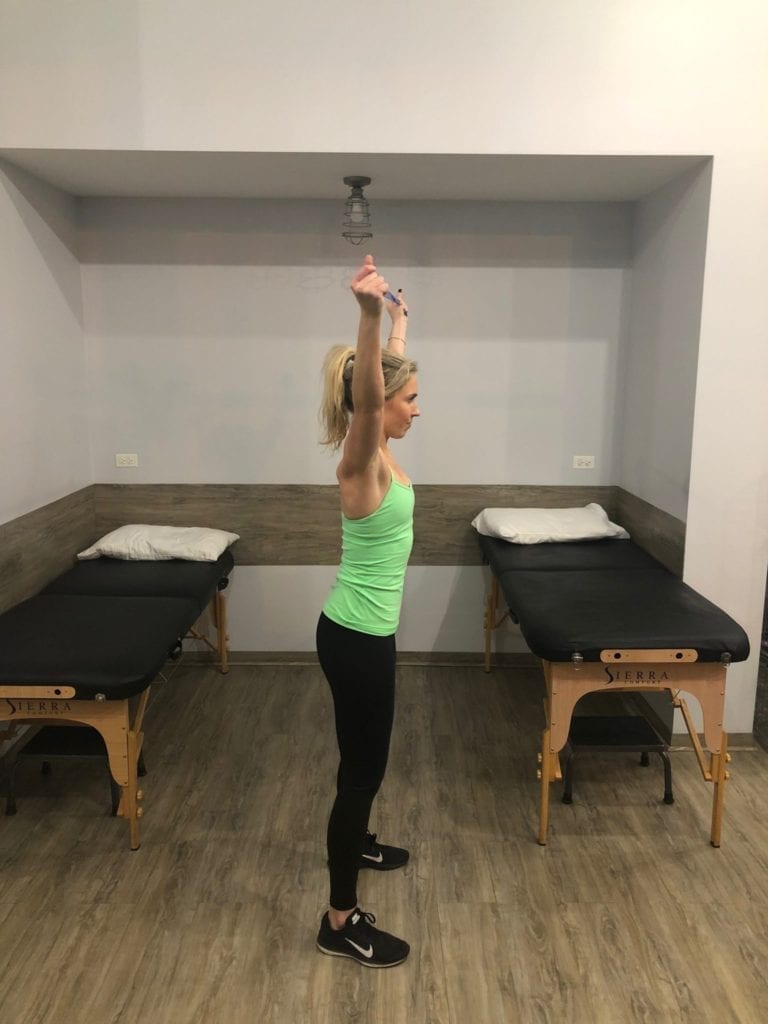
Start with the low pull apart, with your thumbs up and squeezing the shoulder blades back. Lift your arms overhead, keeping that light tension. Keep your core engaged to prevent your low back from arching, and complete 10 reps.
When it’s time to work out, ease into it
Regardless of your planned workout or how your warm-up goes, Conroy wants you to remember one thing: ease into it.
“Don’t go guns hot right into it,” she pleads. “Do your sets with light weights to prime the body, and then you’re good to start ramping up the intensity!”
Here’s your upper body warm-up in a nutshell:
- Foam roll thoracic spine: 10-20 reps
- Side-lying thoracic rotation: 20 reps per side
- Optional: upper trap stretch or levator scapulae stretch, 30 seconds per side
- Bird dog: 10 reps per side
- Serratus press: 10 reps
- High plank to down dog: 10 reps
- Banded pull-apart at bottom: 10 reps
- Banded pull-apart, full range of motion: 10 reps
- Banded pull-apart at bottom + banded pull-apart full range (combined movement): 10 reps
Interested in visiting West Town Physical Therapy for an evaluation? Call them at 773-729-2551 or book online here! You can also visit West Town Physical Fitness (@westtownpt) and Erin herself (@thephytchick) on Instagram for helpful tips, as well as more physical therapy and fitness movements to try.












